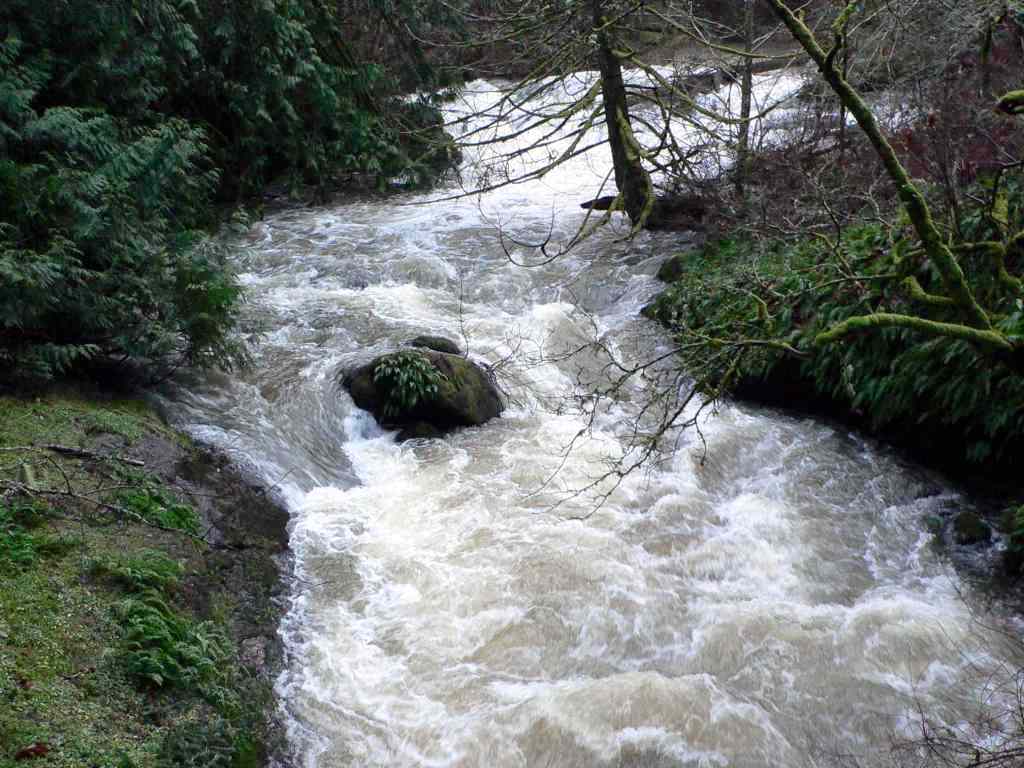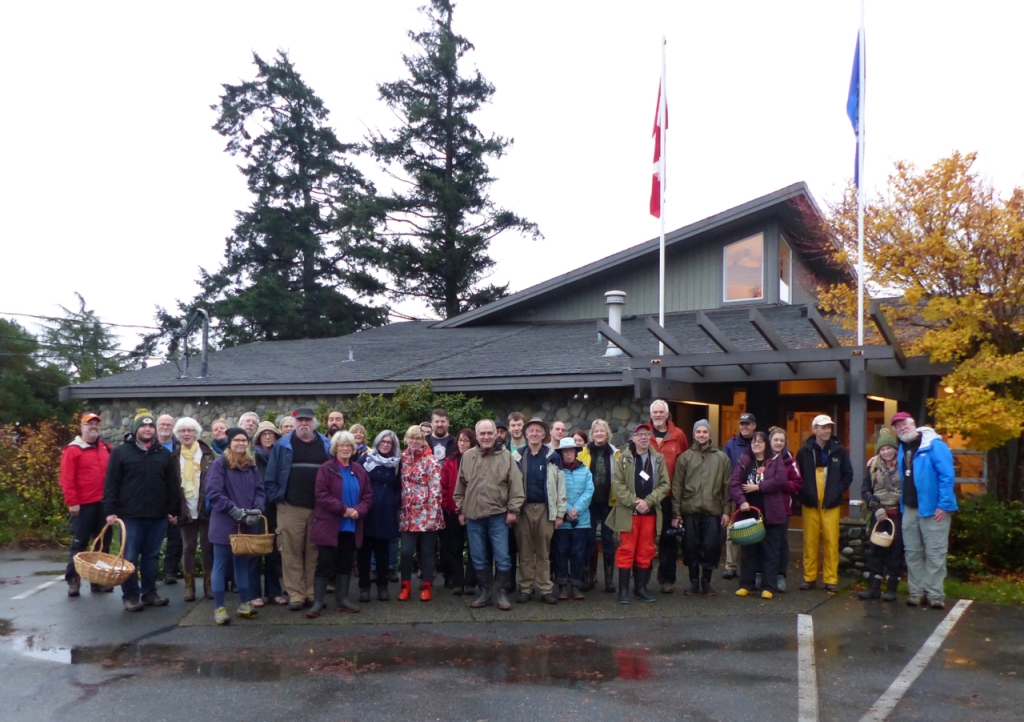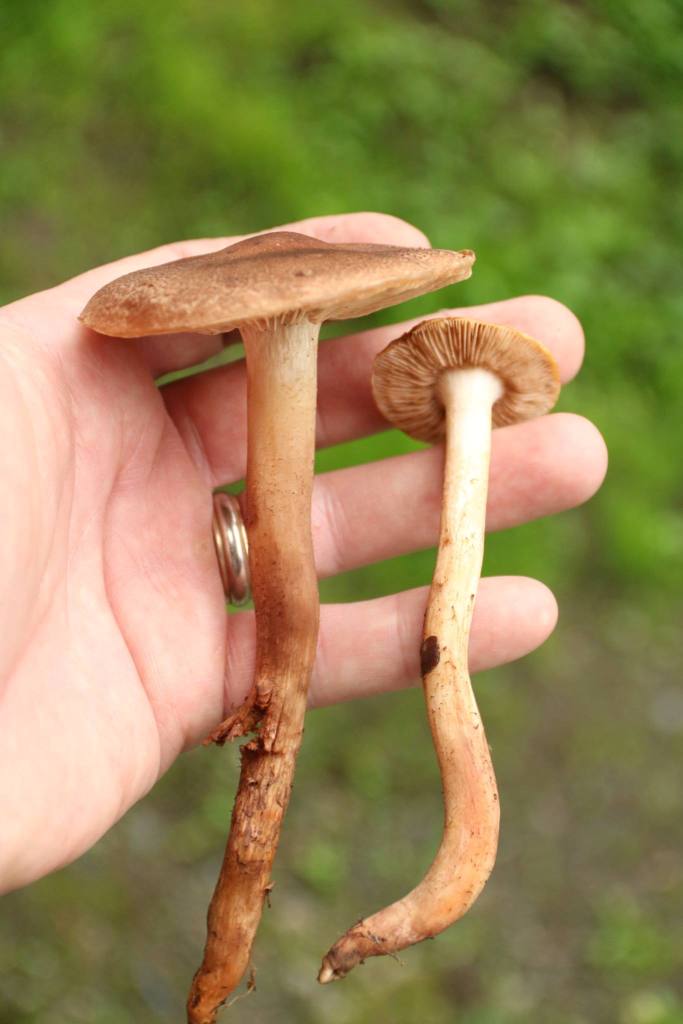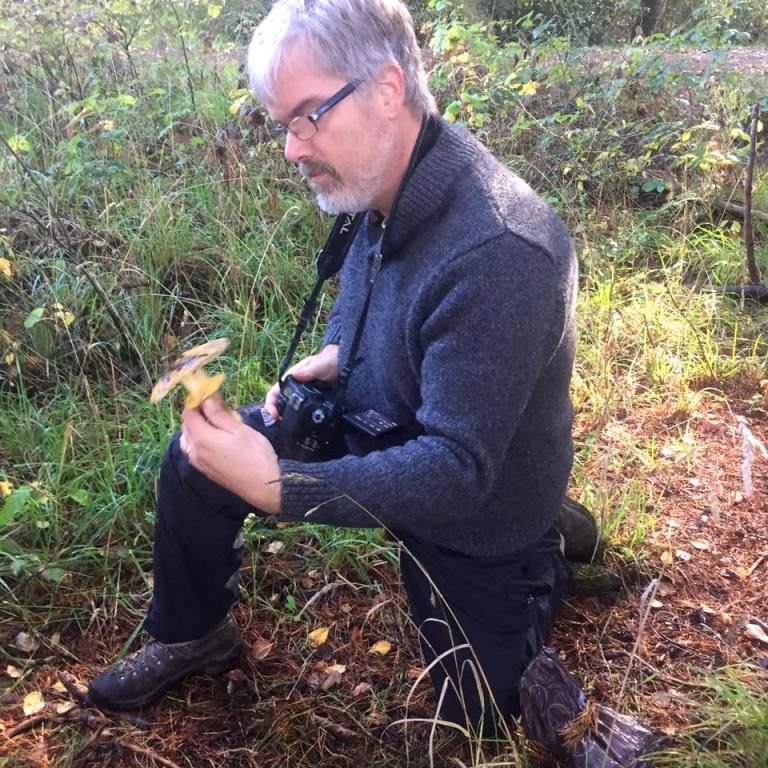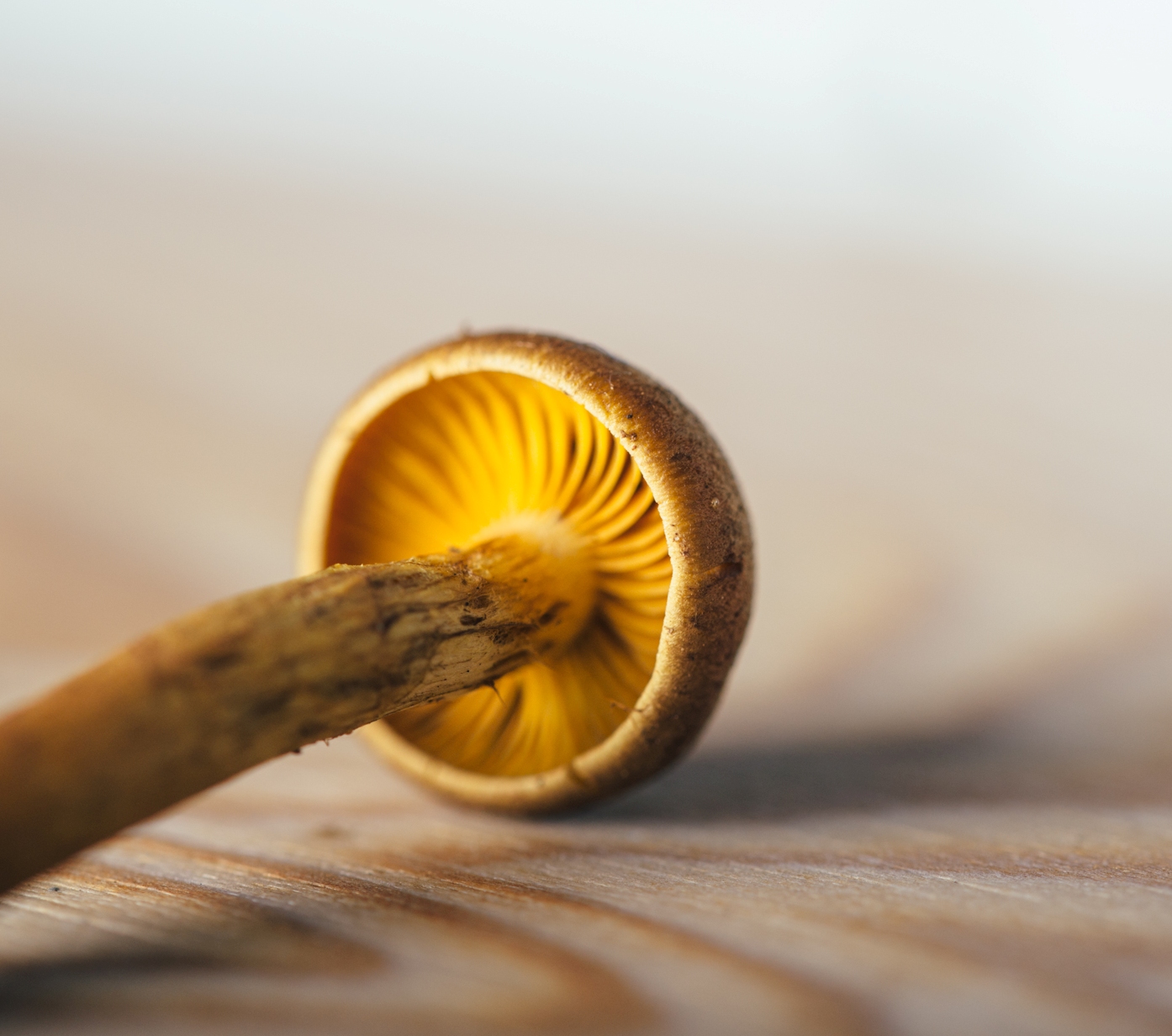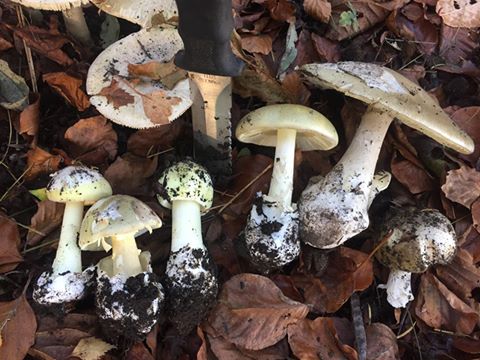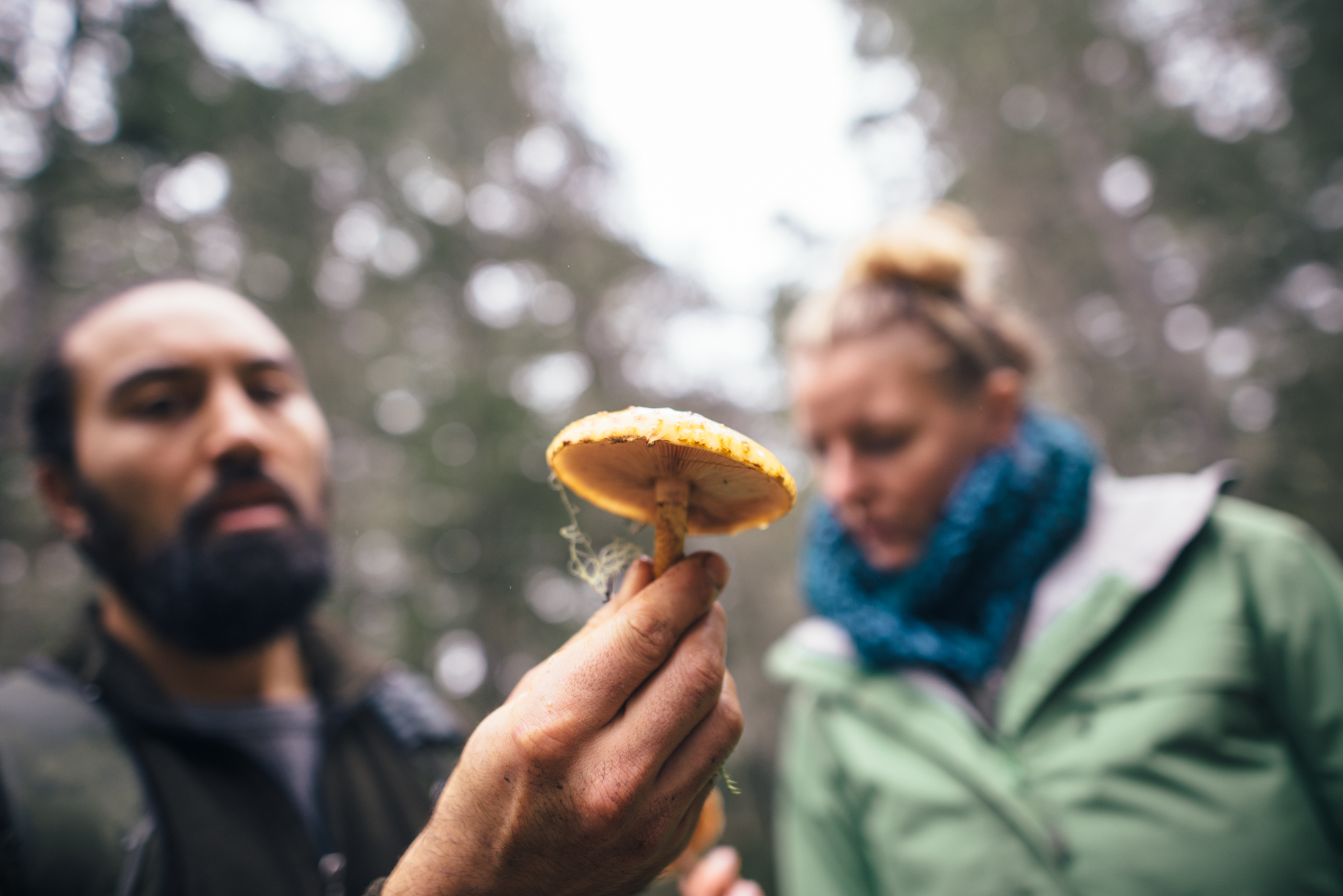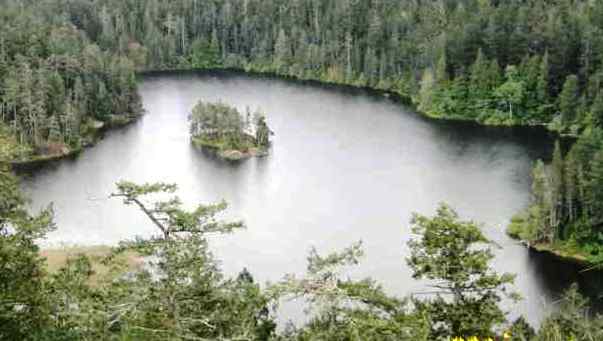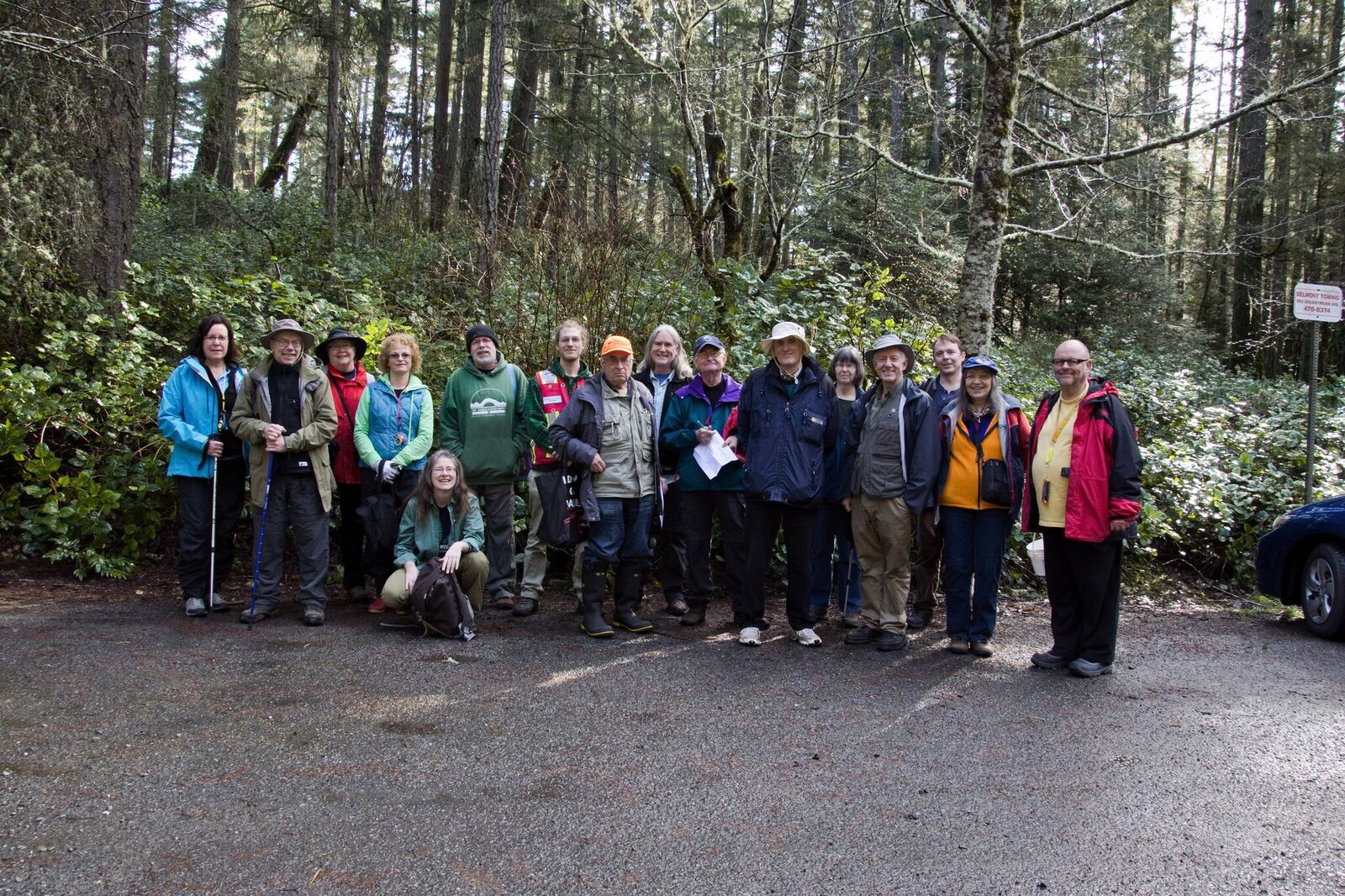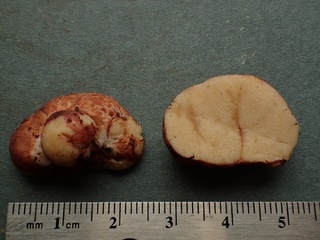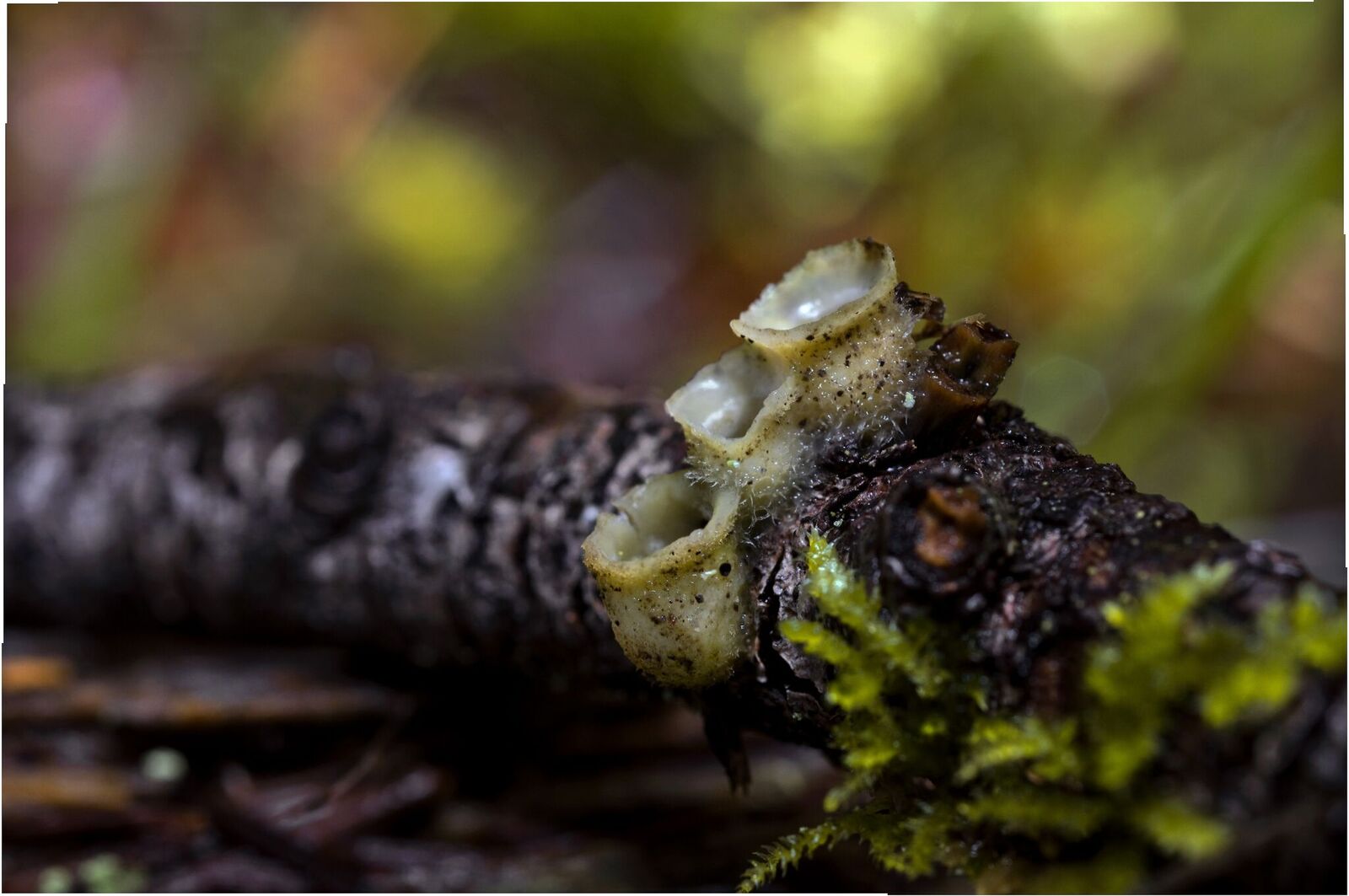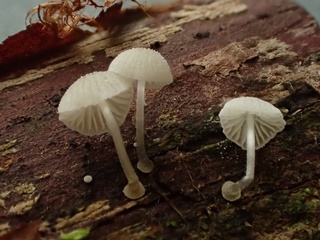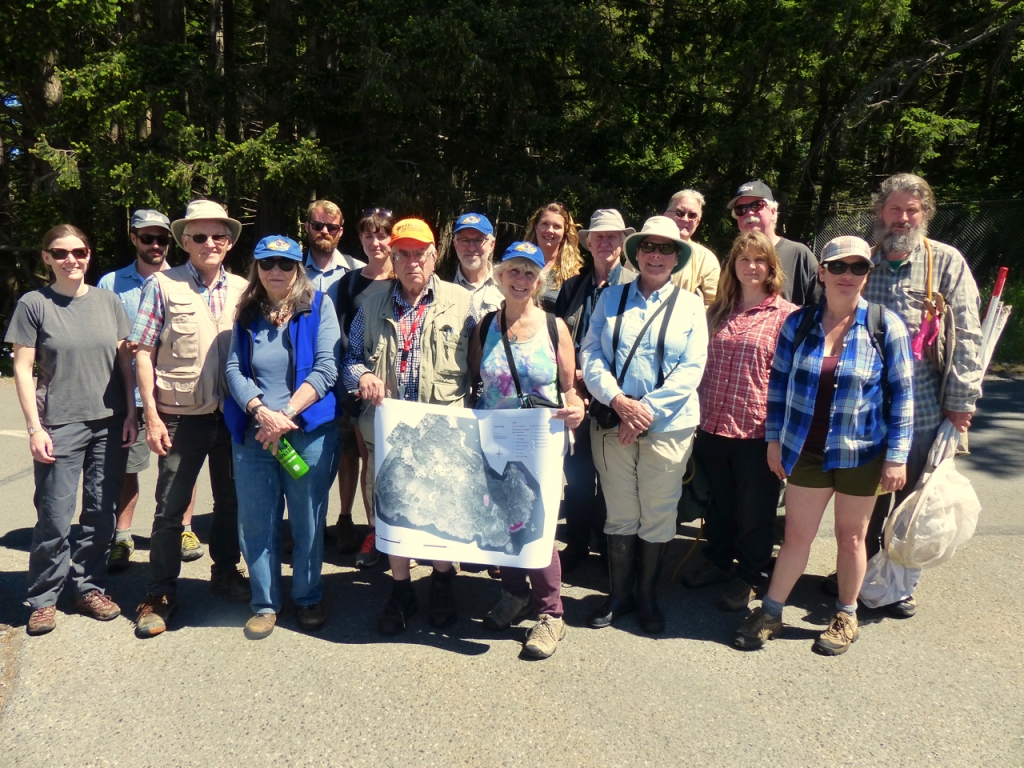
|
| The BioBlitz team at the entrance to Albert Head DND property.
The team included Adolf and Oluna Ceska, James
and Kristen Miskelly, Garry Fletcher, Darren and
Claudia Copley, Robb Bennett, Phil and Marilyn
Lambert, Jenifer Penny, Ryan Batten, Andy
MacKinnon, Moralea Milne, Kem Luther, and
biology staff from Albert Head. Photo by Peter
Mallet, with Moralea Milne's camera. (Click for larger version.) |
|
|
The Metchosin species count from the BioBlitzes edged upward, to
over 2300 species, in May of 2016.
The recent jump in numbers was due to a pair of targeted blitzes
held on May 9 at the William Head Institution
grounds and the DND Albert Head properties. Attending these bioblitzes were a number of local
taxonomy experts.
Here are some pictures of the team at work.
And here are the results: Albert Head (by scientific name
and by species)
and William Head (by scientific name
and
by species).
|
|
The experts were escorted by local personnel at the two
restricted-access properties. There were staff guards at William Head Prison and ecology support
staff (Andrea Schiller, Erica Wheeler) at the DND property. Peter Mallet,
a writer for the DND news magazine Lookout, also
accompanied the team at Albert Head. The event became the cover story for the May 16, 2016,
Lookout magazine.
You can read the story here
(it is on page 6).
|
|
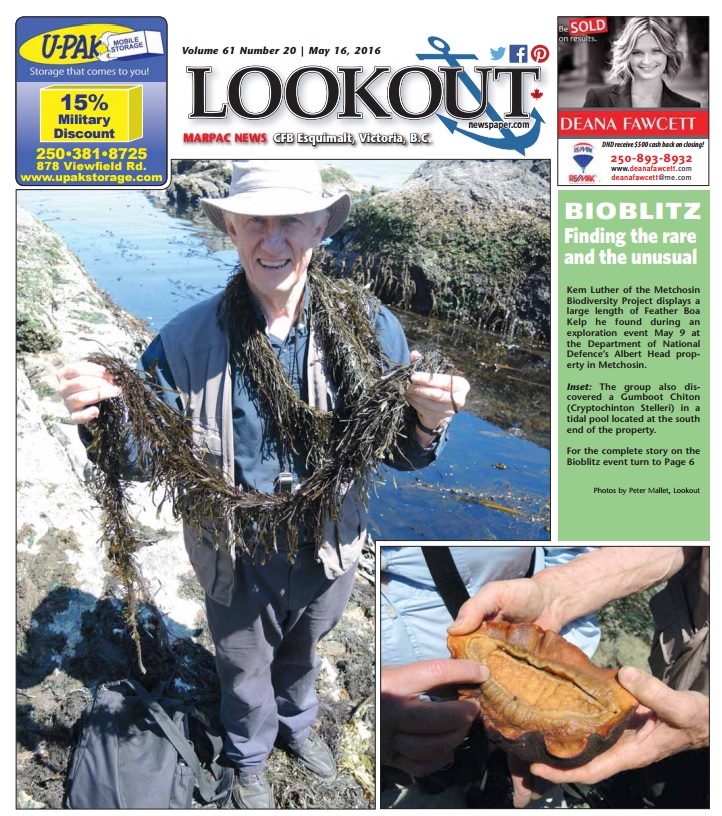
|
| Lookout magazine story about the Albert Head foray. Cover photo of Kem Luther
with feather boa seaweed. (Click for larger version.) |
|
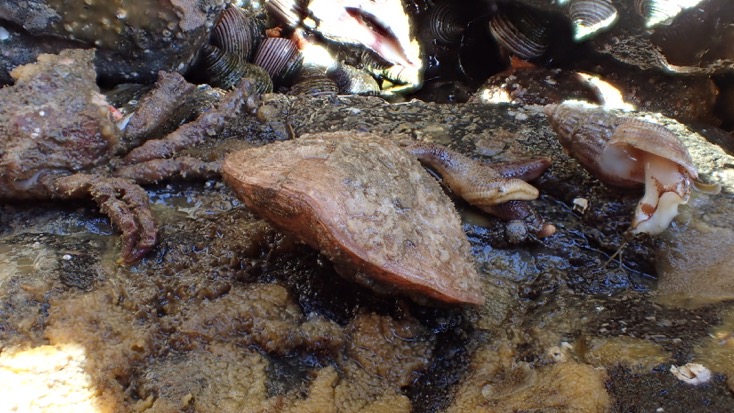
|
| Searchers
found a totally new phylum for Metchosin BioBlitz records, a
brachiopod. In addition to the brachiopod, the new
2016 sightings ranged
across sea cucumbers, snails, worms, chitons, limpets, nudibranchs, crabs, and sculpins.
Photo by Phil Lambert. (Click for larger version.) |
|
|
The tidal area team, which included Phil and Marilyn Lambert and Garry Fletcher,
identified 160 different species. Fifteen of these
species had not been recorded by the previous bioblitz
intertidal teams. On this web page you can enjoy a number of pictures of their finds.
|
|
The insect/spider team of Darren and Claudia Copley and
Robb Bennett had another incredible day. Without even
setting out their traps ahead of time, they managed to
find 130
different species—one for every three minutes they were
in the field! Many of the species, of course, had to be
taken back to the lab and painstakingly analyzed before
they knew what they had. In the end, almost 40 of their
species turned out to be new to the bioblitz database.
|
|
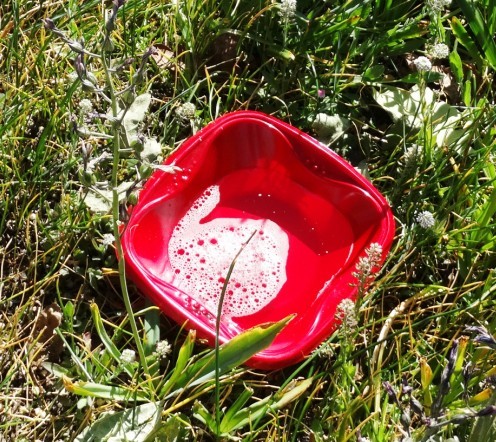
|
| A bee trap (soapy water in a bowl) set out by the insect team. The new species found during the day
included wasps, earwigs, psyllids, flies, lacewings, beetles, crickets, and some 20 spiders. In spite of their focus on the ground,
Darren Copley found time to look up and record a number of bird species. Photo by Kem Luther. (Click for larger version.) |
|
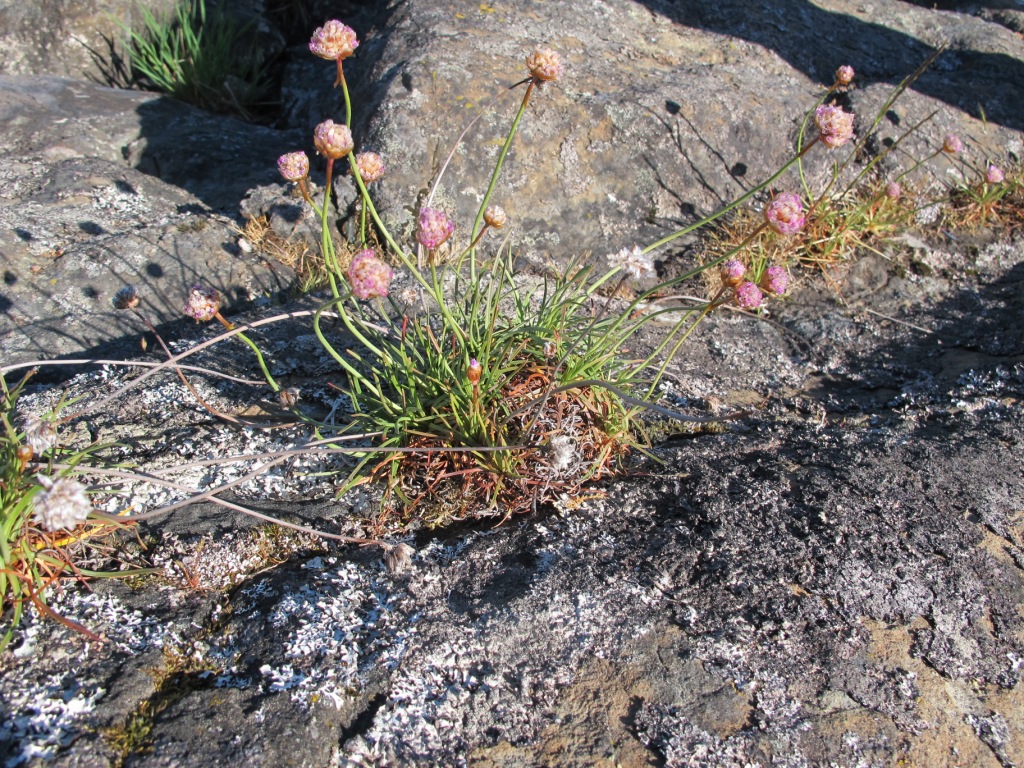
|
| Sea Thrift, Armeria maritima, growing on a cliff above the sea at Albert Head.
Photo by Kristen Miskelly. (Click for larger version.) |
|
|
James and Kristen Miskelly, part of the plant team (better to say “part of the everything team” —
this couple has an encyclopedic knowledge of a wide range of species groups), tallied about
200 species for the May 9 bioblitz. Ten of them had not been found at the Metchosin bioblitzes.
They included grasses, sedges, rushes, and forbs.
Here are pictures of some of the plants seen during
the day.
|
|
Ryan Batten formed a one-man lichen task force. His tally for the day was 125 lichens
species. This he says, is a “meagre” result. This number may be small potatoes at the annual
meeting of the ABLS (American Bryological and Lichenological Society), but in Metchosin
it’s a significant day’s work. Among the lichens on his list were nine new additions
to the Metchosin lichen count. And one new plant, a rush.
|
|
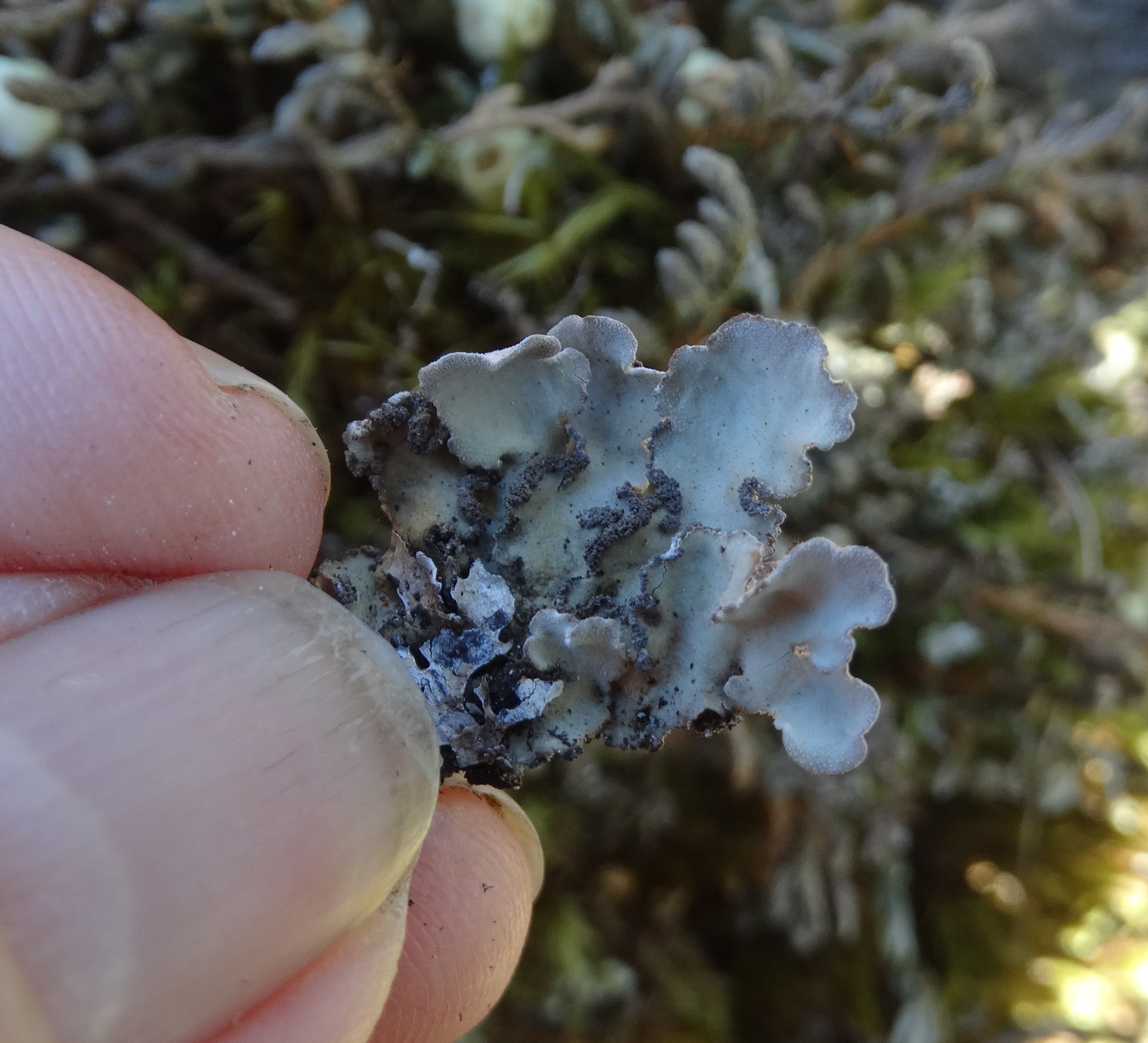
|
| A lichen found on the grounds of William Head Institution, Lobaria scrobiculata. Photo by Kem Luther. (Click for larger version.) |
|
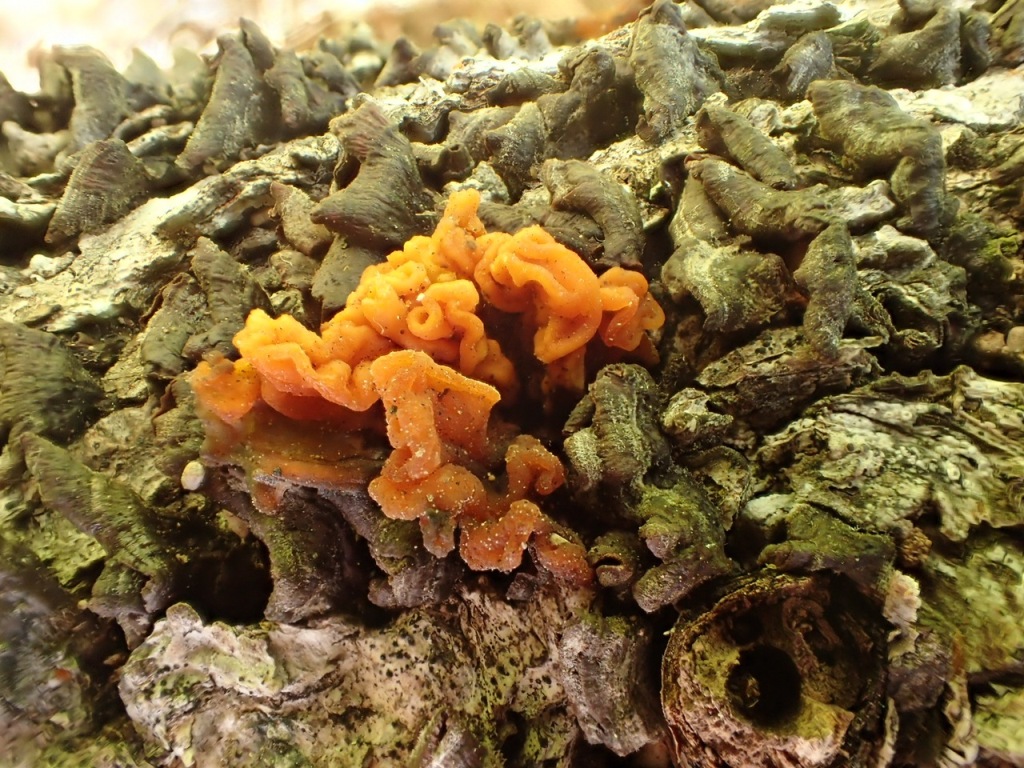
|
| The Ceskas found two kinds of Tremella—strange, jelly-like,
brain-shaped fungal parasites—that had not been seen in Metchosin before. This one is Tremella aurantia.
Photo by Adolf Ceska. (Click for larger version.) |
|
|
The fungal team, Adolf and Oluna Ceska, sometimes aided (and occasionally hindered) by Kem
Luther, found a number of new fungi. Some of their additions to the bioblitz lists have been
delayed, alas, by a computer crash at the Ceska’s home.
In the meantime,
here are pictures of some of the mosses seen by Kem
on May 9.
|
|
One of the foray's large finds was a very small plant. Working on their hands and knees in a wet meadow
at Albert Head, the team came across
Juncus kelloggii,
a rush, one of BC's rarest plants. It is
federally and provincially red-listed. At the time
the COSEWIC report on the plant was filed in 2003,
it was known in BC from only one population, in Uplands
Park.
|
|
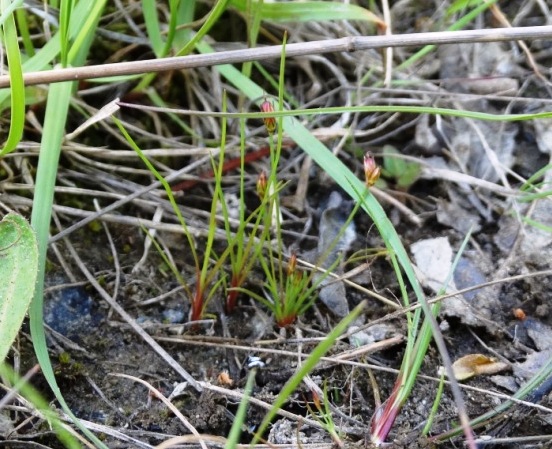
|
| Juncus kelloggi, a rush sometimes found in wet areas. It is the small, bright green
plant in the exact middle of the picture. Photo by Kem Luther. (Click for larger version.) |
|
Metchosin Biodiversity Day, April 2016
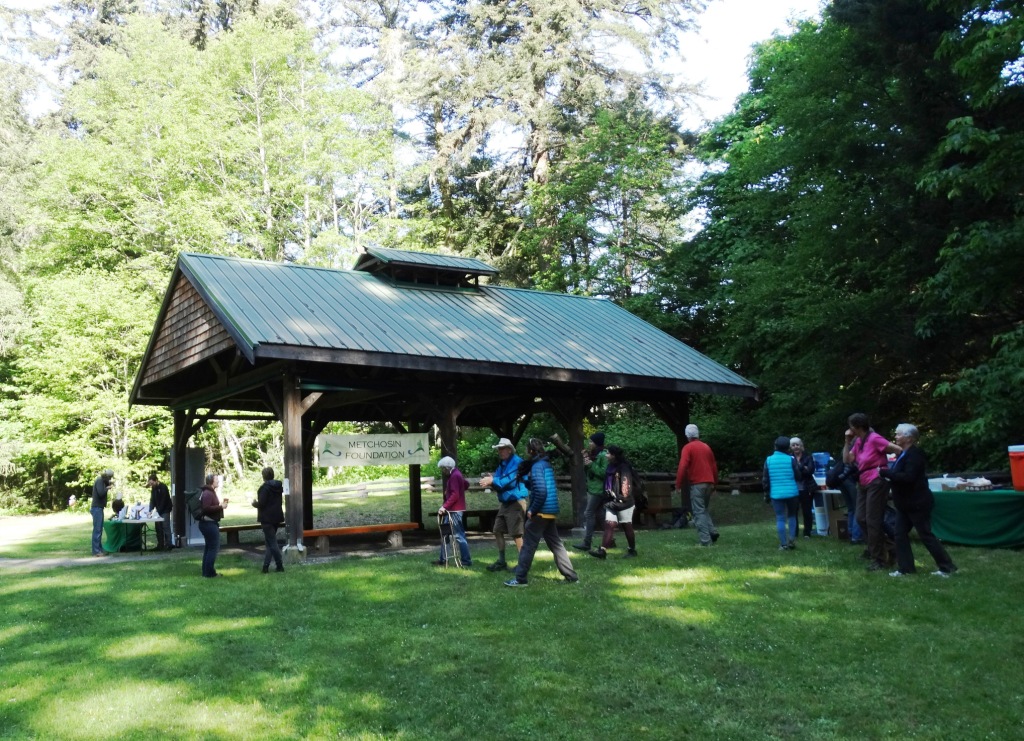
|
| The Witty's Lagoon teaching shelter, home of the first Metchosin Biodiversity Day. Photo by Kem Luther. (Click for larger version.) |
|
|
Mechosin residents enjoyed their first Metchosin Biodiversity Day on the
last weekend in April. The weather was ideal. Over a hundred
people came by the biodiversity centre at the Witty's Lagoon
teaching shelter.
The weekend event began on Friday night when guests met at the Metchosin
Council Chambers to hear Christian Engelstoft,
a contract biologist with
Habitat Acquisition Trust, tell us about some of the most furtive animals of Metchosin, the bats and owls.
|
|
On Saturday, April 30,
a dozen or so birders, ranging from experienced birder to novice, joined Ian Cruickshank, one of our regions best bird experts,
on a bird-spotting walk. Ian once again displayed his uncanny ability to identify unseen birds from the meerest "cheep" in the bushes.
|
|
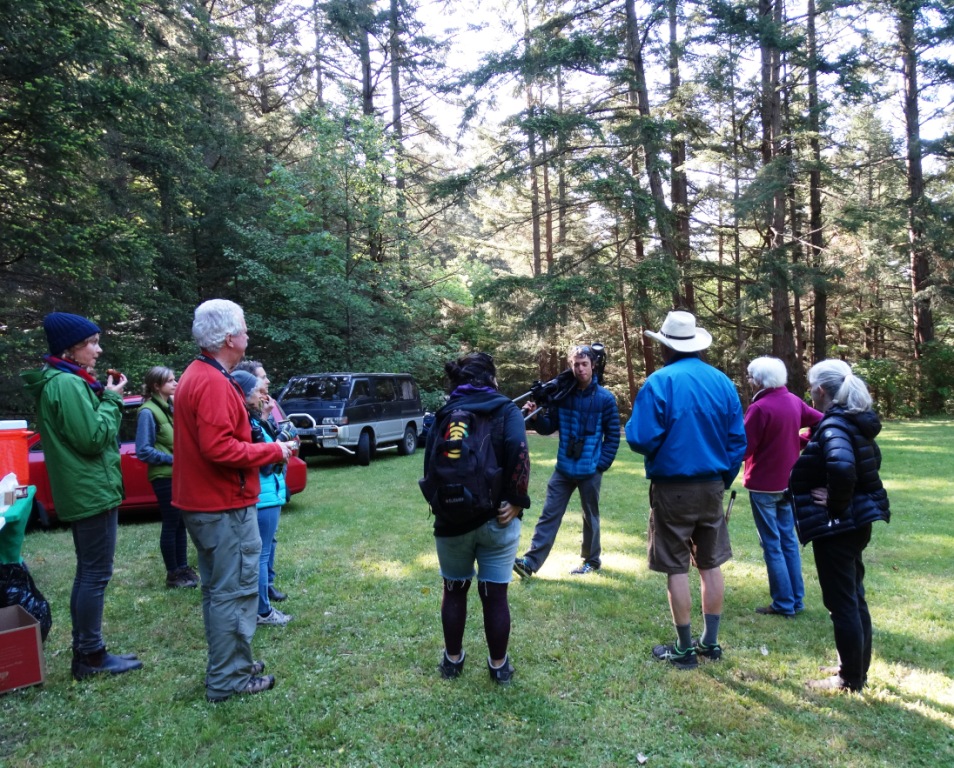
|
| A group gathers around Ian Cruickshank to begin the birding walk. Photo by Kem Luther. (Click for larger version.) |
|
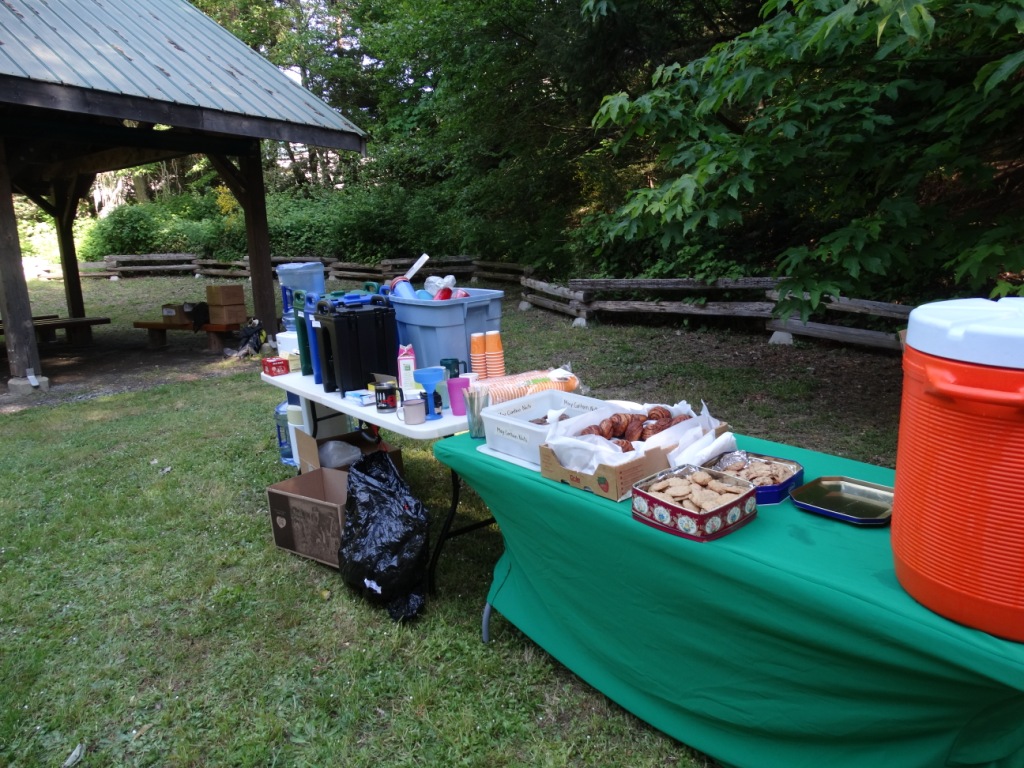
|
| Snacks for the Metchosin Biodiversity Guests. Photo by Kem Luther. (Click for larger version.) |
|
|
More guests arrived at 10:00 am. A wide range of drinks and snacks
were laid out (including a batch of Martha Haylor's cinnamon buns)
to fortify people for the morning walks. CRD Parks staff had
displays set out for people to see. The button machine, which made
metal buttons out of nature pictures, was a big hit. Three groups
soon headed out to sample the wares of Witty's. Joel Ussery took
one of the groups to see the salt marshes. Kem Luther's group
circled the teaching shelter to look for mosses, mushrooms, and
lichens. Sean Rangel led his group toward the beach to view the
ecosystem changes from the Witty's parking lot to the beach.
|
|
The morning walks wrapped up around noon.
The volunteers ate bag lunches and prepared for the next influx of
visitors for the 1:00 pm walks. When they arrived, Andy took a
dozen people to look at wildflowers. Another group, let by
Mistress of Slime Kristiina Ovaska, searched for slugs and snails,
many of which were in hiding because of the warmer, drier weather.
Sean Rangel redid his ecosystem walk for a new batch of visitors.
While the groups were away, several groups of Witty visitors
stopped by the CRD displays and helped to finish off the snacks.
|
|
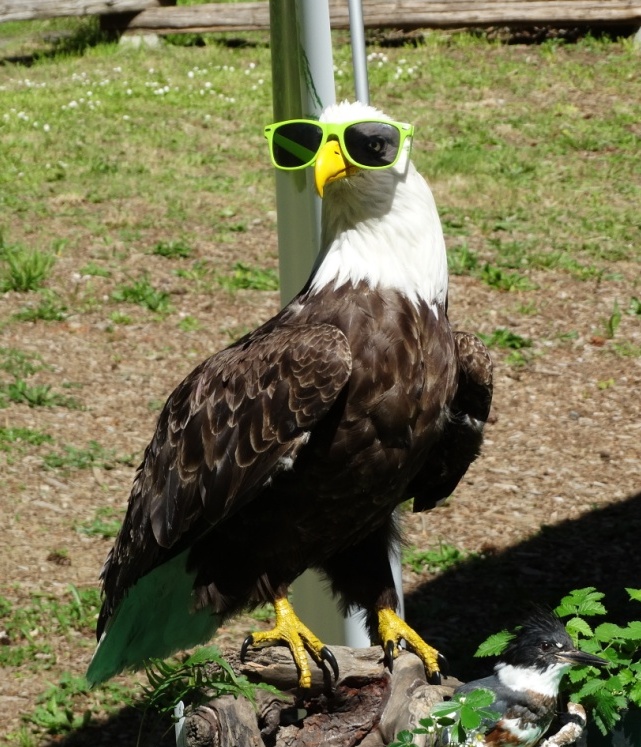
|
| A stuffed eagle brought by the CRD staff. Glasses by Andy. Photo by Kem Luther. (Click for larger version.) |
|
Matheson Lichen Survey, March 2016
The second of our targeted BioBlitz events of 2016 took place on Friday, March 18, at Matheson Lake CRD Park. Kem Luther accompantied
a team of three experts--Hans Roemer, Ryan Batten, and Gerry Ansell--on a lichen survey of Matheson Lake CRD Park. The team found
about 120 lichens. Of these, about 30 were new to the
Metchosin bioblitz database. They also found 10 mosses and
liverworts that had not been recorded for Matheson Lake Park. The
current list of Matheson Lake CRD Park mosses, liverworts, lichens,
and mushrooms now contains about 70 mosses, 20 liverworts, 120
lichens, and 80 mushrooms.
|
|
|
The bioblitz survey group traversed several of the Matheson Park paths, including the trail to Cougar Bluffs.
The bluffs give hikers unrivaled views of the park. They also open up the opportunity to find several
taxa
not found in the rest of the park.The steep slope just below the ridge weeps a steady stream of water
in the spring and the
seepages provide habitats for an unusual array of mosses, liverworts and lichens.
|
| |
One of the
Pacific Northwest liverworts that enjoys seepage habitats on cliffs is
Fossombronia. Without its tall setas and round
spore cases, Fossombronia would be difficult to spot:
the thallus lies along the ground and dies back in warmer weather.
Fortunately, this species almost always has sporophtyes in the growing seasons.
|
|
|
|
|
Lichen species can be extremely widespread. One of these circumboreal lichens, Mycoblastus sanguinarius, can be found among the original 80 lichen
species recognized by Linnaeus in the first edition of his Species Plantarum (he called it Lichen sanguinarius). The bioblitz search
team saw this species on the trees in Matheson. There is a chemical in the base of its apothecia that presents a blood red color (thus the species
epithet sanguinarius), especially when the spores above it have been grazed by snails.
|
| |
Draped on the tree branches that extend over the waters of Matheson Lake are the
Ramalina lichens. The one pictured here, Ramalina menziezii,
is aptly called both the Fishnet Lichen and the Lace Lichen--the
threads of this lichen form a fine matrix that resembles a net. Recently declared the
state lichen of California, Ramalina menziesii contributes nitrogen to the
local ecosystems and often serves as a browse for mammals (when they can reach it).
|
|
SVIMS Mushroom Survey at Matheson, March 2016
The first of our targeted BioBlitz events of 2016 took place on Saturday, March 5, at Matheson Lake CRD Park. SVIMS,
the Southern Vancouver Island Mycological Society, held a spring mushroom foray, led by Oluna and Adolf Ceska.
The Metchosin Biodiversity Project has now recorded 400
different species of fungi inside the borders of the
District of Metchosin.
|
|
|
A group of about 20 searchers worked their way along the
path at the southern shore of Matheson lake. They found
27 different kinds of fungi. Of these, 6 were new to the Metchosin Biodiversity Project database--they had not
been recorded in Metchosin before. The new fungi were Clavulina rugosa, Lachnella alboviolascens, Marasmius androsaceus,
Mycena tenerrima, Nematogonum ferrugineum, and Tremellodendropsis tuberosa.
|
| |
One of the foray members turned up a prime specimen of Hysterangium separabile, a false truffle.
References report this mushroom to have a slightly fruity,
sometimes pungent, odor. This particular specimen had
a strong smell of horseradish.
|
|
|
|
|
One of the bird's nest fungi, Nidula niveotomentosa, has a white, turned-out rim and the outside
of the "nest" is covered with small white hairs. This specimen had already discharged its "eggs" (spore cases).
|
| |
Mycena tenerrima is a small (cap about 2mm) mushroom often found after wet weather on fallen branches.
When it is young, the cap has granules on the top that look like grains of sugar.
|
|
|
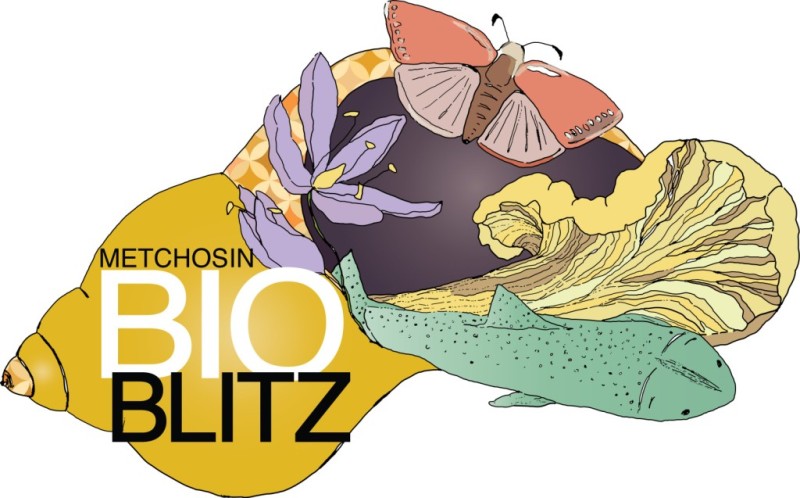
|
|
Artwork by Gala Milne
|
|
|
| | | |
